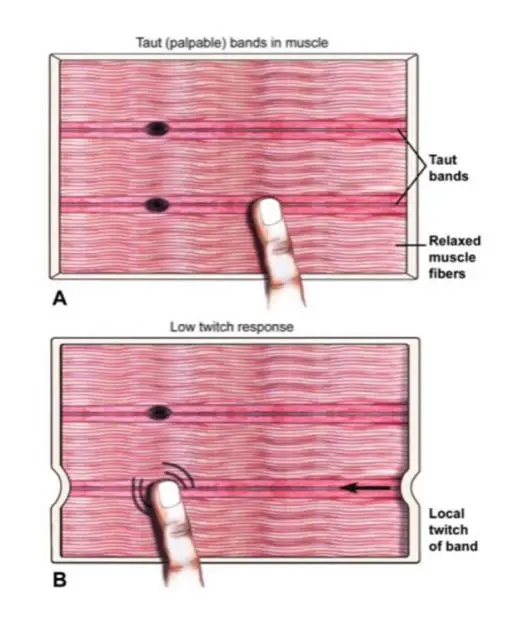Low back pain is in the top three list of reasons why people call in sick and are unable to attend work in the UK, as per the British Pain Society.
Like low back, other musculoskeletal conditions and pain also play a major role in our society. Since it’s such a big deal for us, we should have an effective plan in place to tackle it, right?
Well, unfortunately, the reality is far more confusing than that with a current health system lacking the tools to provide a clear and effective treatment method for musculoskeletal pain.
There are different treatment options available through the conventional medical system. The question is, how effective are they? “Not effective” is the most common answer from people that have gone through the system and the statistics speak for themselves.
Inside Clinical Massage aims to close that gap, providing a solid treatment option that has proven its effectiveness over and over again through the work of many practitioners over the past 15 years in the UK.

Clinical massage therapy and the Jing Method, a combination of some of the most advanced hands-on techniques put together into a single treatment, has shown itself to be the most effective treatments for clients with musculoskeletal pain.
Special mention here goes to Jing directors and creators of the Jing Method, Megan Mari and Rachel Fairweather who studied these techniques and put them together into protocols that can be taught, taking the industry of soft tissue therapy to a whole new level in the UK.
To better understand how Clinical Massage works we can start by explaining one of the techniques that we use the most, Trigger Point work.
What is a Trigger Point?
A Trigger Point is a hyperirritable area located in a taut band of muscle fibres (see the picture above – the black nodules illustrate a trigger point) and they cause pain or stiffness and decrease the functionality and potential of the affected tissue.
Trigger Points develop when the muscle fibres get stuck in contraction and are unable to go back to their relaxed state.
Trigger Points can be active or latent and during a clinical massage treatment session we treat both types.
Active trigger points are actively causing pain and/or autonomic phenomena (sweating, dizziness, itchiness, ringing, etc.)
Latent trigger points are not actively causing pain or other noticeable symptoms but are waiting to come into play anytime and are also affecting the tissue’s behaviour negatively.
Active Trigger Points are known to cause pain and/or referred pain in a specific, recognisable pattern. What does this mean? It means that the pattern of pain caused by trigger points is the same or very similar in every person.
The legend Dr Janet Travel (1901-1997) discovered Trigger Points and their pain patterns and extensively documented it on what we could call maps of pain patterns.
These maps of pain patterns help identify and treat the origin cause of the pain. This is where clinical massage therapists´ knowledge and ability to identify these patterns comes into play.
See the picture below for an example of a pain pattern map for the piriformis muscle, a muscle located in the gluteal area. The “x” marks where the muscle is located and the area in red marks where the pain is felt.
When a client comes in presenting with pain in that pattern, we will assess and treat that muscle. There are of course other muscles that refer to pain in the same area and have very similar map patterns and that’s where the fun begins for a clinical massage therapist; how fast can I find and release the right one?
It’s an art in itself.

So, how do we release Trigger Points?
Trigger points are released very effectively by direct steady pressure on them over a period of time, normally a few seconds (see the picture on the right for an example). There are of course other ways of releasing them, some of them quite complex, but we will be not covering these today.
When steady pressure is applied over time, the muscle fibres that were stuck in contraction let go and return to their natural relaxed state.
The tissue responds well to patience, the slower the better. Regardless of what we’re treating, tissue also responds better when the therapist has taken the time and has the knowledge to take their client into Parasympathetic Nervous System Mode or deep relaxation (this is the mode in which our body restores and repairs itself.
We often miss out on time spent in this mode due to stress and the constant demanding and fast-paced society we live in).
For this reason, a good clinical massage session is holistic and deeply relaxing at the same time as being specific and goal-oriented.
Author bio
Rocio Santiago MA in nursing, Dip soft Tissue Therapy
Ro began her career initially as a nurse. During a difficult life period, Ro decided to ‘stop everything’ and travel to India, where she joined a massage course. From then on her career took another course as she got increasingly more interested in pursuing a future as a soft tissue therapist.
Following this, Ro went on to train at one of the leading soft tissue therapy schools in Europe, completing a 3-year degree level course and specialising in effective soft tissue manipulation for the treatment of musculoskeletal pain.
Ro has been seeing clients as a soft tissue therapist for 7 years, successfully treating a wide range of conditions. Her background in the medical sector, passion for the anatomy, biochemistry and physiology of the human body and a questioning nature result in a treatment approach that is based on science. Her life experience has added the holistic understanding that results in a treatment where the mind and body are addressed as one.


